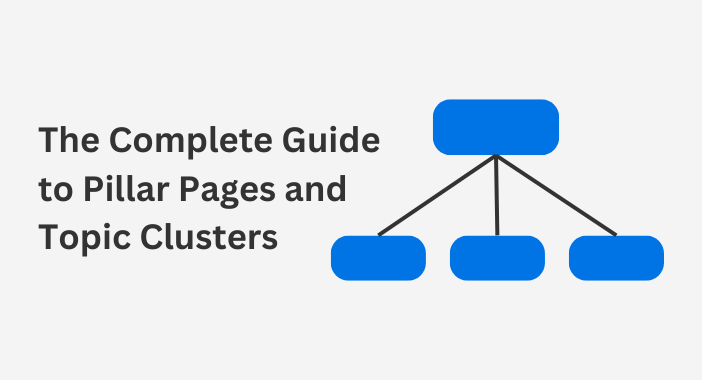Creating engaging content for your blog can be a challenging task. Especially when you’re constantly in need of fresh content ideas.
In this guide, you will discover the best ways to find content ideas for your blog. We’ll provide practical strategies, tools, and tips to help you overcome the content creation hurdle.

Whether you’re a blogger, a content marketer, or a digital marketing professional, this guide is for you. If you’re involved in content creation and looking for inspiration, you’re in the right place.
Let’s dive in and start exploring the best ways to find content ideas for your blog.
Understanding Your Audience: The Foundation of Great Content
The first step in generating content ideas is understanding your audience. Knowing who they are, what they want, and what they care about is crucial.
Your audience is the foundation of your content. Their needs, interests, and pain points should guide your content creation process.
Here are some ways to understand your audience better:
- Conduct surveys or polls to gather insights about their preferences.
- Use social media listening tools to understand their conversations and concerns.
- Analyze your website analytics to see what content they engage with the most.
- Read the comments on your blog posts to understand their thoughts and feedback.
- Use customer feedback and testimonials to understand their experiences and needs.
By understanding your audience, you can create content that resonates with them. Content that solves their problems, answers their questions, and adds value to their lives.
Remember, the more you know about your audience, the better you can tailor your content to their needs. And the more likely they are to engage with your content.
So, start with your audience. Understand them. And let them guide your content creation process.
1. Brainstorming Techniques That Work
Brainstorming is a powerful technique for generating content ideas. It allows you to explore different angles and perspectives, leading to fresh and unique content.
There are many brainstorming techniques you can use. Some of the most effective ones include mind mapping, word association, and the SCAMPER method.
- Mind Mapping: This technique involves creating a visual representation of your ideas. It helps you see connections between different ideas and explore different angles.
- Word Association: This technique involves starting with a single word or idea and then coming up with related words or ideas. It helps you explore different aspects of a topic.
- SCAMPER Method: This technique involves asking questions about a product or idea to generate new ideas. The questions are: What can you Substitute? Combine? Adapt? Modify? Put to another use? Eliminate? Reverse?
These techniques can help you generate a wide range of content ideas. Try them out and see which ones work best for you.
Mind Mapping Your Way to New Ideas
Mind mapping is a powerful brainstorming technique. It allows you to visually organize your thoughts and ideas, making it easier to see connections and explore different angles.
Start with a central idea or topic. Then, create branches for each subtopic or related idea. Continue branching out as you come up with more ideas.
Mind mapping can help you generate a wealth of content ideas. It’s a creative and visual way to explore a topic in depth.
Word Association for Content Inspiration
Word association is another effective brainstorming technique. It involves starting with a single word or idea and then coming up with related words or ideas.
For example, if your initial word is “fitness,” related words could be “exercise,” “nutrition,” “wellness,” “gym,” and so on. Each of these words can then spark further ideas.
Word association can help you explore different aspects of a topic. It’s a simple yet powerful way to generate a wide range of content ideas.
2. Leveraging Social Media for Trending Topics
Social media is a goldmine for content ideas. It’s where people share their thoughts, ask questions, and discuss trending topics.
By monitoring social media, you can discover what your audience is interested in. You can find out what questions they’re asking, what problems they’re facing, and what topics they’re discussing.
There are several ways to leverage social media for content ideas:
- Monitor trending topics: Platforms like X (Twitter) and Facebook highlight trending topics. These can provide inspiration for timely and relevant content.
- Follow relevant hashtags: Hashtags can help you discover what people are talking about in your industry or niche.
- Engage with your audience: Ask your followers what they want to read about. Their responses can provide valuable content ideas.
By leveraging social media, you can stay on top of trends and create content that resonates with your audience.
Using Social Listening to Your Advantage
Social listening involves monitoring social media platforms for mentions of your brand, competitors, products, and more. It’s a powerful way to understand your audience and discover content ideas.
By practicing social listening, you can discover what people are saying about your brand. You can find out what they like, what they don’t like, and what they wish you would do differently.
These insights can provide a wealth of content ideas.
For example, if people are asking questions about your products, you could create a FAQ post or a how-to guide. You could write a case study or testimonial post if they’re praising a particular feature.
Social listening allows you to tap into the conversations happening around your brand. It’s a powerful way to generate content ideas that resonate with your audience.
3. Content Idea Generators and Tools
In the digital age, there are numerous tools designed to help you generate content ideas. These tools can save you time, provide inspiration, and help you discover topics that your audience is interested in.
Content idea generators work by taking a keyword or phrase and generating a list of potential blog post titles or topics. They can be a great starting point when you’re feeling stuck or uninspired.
Here are a few content idea generators and tools you might find useful:
- HubSpot’s Blog Ideas Generator: This tool generates blog post titles based on the nouns you input.
- Portent’s Content Idea Generator: This tool generates content ideas and also provides tips on why the idea might work.
- Semrush’s Topic Research Tool: A great tool by Semrush to find content ideas based on the main topic and offer important metrics such as volume, difficulty, and topic efficiency.
These tools can provide a starting point, but remember, they’re just tools. The best content ideas will always come from understanding your audience and their needs.
BuzzSumo, AnswerThePublic, and Google Trends
BuzzSumo, AnswerThePublic, and Google Trends are three more tools that can help you generate content ideas.
BuzzSumo allows you to see what content is most popular on social media. You can search by keyword or domain to see what’s trending. This can help you identify popular topics and formats in your industry.
AnswerThePublic visualizes search questions and suggests autocomplete searches in an image called a search cloud. It’s a great tool for discovering what questions people are asking about a particular topic.
Google Trends shows how search-term interest is changing over time. You can use it to identify trending topics and seasonal trends.
These tools provide different ways to discover what people are interested in and talking about. By using them, you can ensure your content is relevant and engaging.
4. The Role of Keyword Research
Keyword research is a crucial part of content creation. It helps you understand what your audience is searching for and how you can meet their needs with your content.
There are several tools available for keyword research. Google Keyword Planner, SEMrush, and Ahrefs are among the most popular.
These tools can show you the search volume for specific keywords, related keywords, and the difficulty of ranking for those keywords.
Here are a few tips for effective keyword research:
- Look for long-tail keywords. These are longer, more specific phrases that people search for. They often have less competition and a higher conversion rate.
- Consider search intent. What is the user hoping to find when they search for that keyword? Make sure your content matches their intent.
- Use your keywords naturally in your content. Keyword stuffing can harm your SEO and make your content less enjoyable to read.
Remember, the goal of keyword research isn’t just to rank higher in search results. It’s to create content that meets the needs of your audience.
Finding SEO-Friendly Content Ideas
Once you’ve done your keyword research, you can use those keywords to generate content ideas.
Start by looking at the related keywords and questions that your keyword research tool provides. These can give you ideas for blog posts that answer common questions or explore related topics.
For example, if your keyword is “content marketing,” related questions might include “What is content marketing?” or “How to create a content marketing strategy?” These questions can become blog post titles, with the content of the post answering the question.
Remember, SEO-friendly content isn’t just about using the right keywords. It’s also about creating high-quality content that provides value to your readers. Always keep your audience’s needs and interests at the forefront of your content creation process.
5. Analyzing Competitors for Content Gaps
Analyzing your competitors’ content can provide a wealth of ideas. It allows you to see what topics they’re covering, how they’re approaching those topics, and where there might be gaps you can fill.
Start by making a list of your main competitors. Look at their blogs, social media posts, and any other content they produce. What topics do they cover? How do they engage with their audience?
Here are a few things to look for when analyzing competitor content:
- Topics they cover that you haven’t yet.
- Topics you both cover, but where your content could provide a different perspective or more depth.
- Questions or comments from their audience that they haven’t addressed.
Remember, the goal isn’t to copy your competitors. It’s to learn from them and identify opportunities to provide unique value to your audience.
Identifying Opportunities in Competitor Analysis
Once you’ve analyzed your competitors’ content, it’s time to identify opportunities. These could be topics they haven’t covered, questions they haven’t answered, or areas where you can provide more depth or a unique perspective.
For example, if your competitor has a popular post on “10 Tips for Content Marketing,” you might create a post on “The Ultimate Guide to Content Marketing,” providing more detailed advice and resources.
Or, if you notice a lot of questions in their comments about a specific topic, you could create a post answering those questions.
The key is to use your competitor analysis to find ways to provide unique value to your audience. This will help you stand out from the competition and attract more readers to your blog.
6. Repurposing Existing Content
Repurposing content is a powerful strategy for generating new ideas. It involves taking content you’ve already created and presenting it in a new format or context. This can breathe new life into your old content and reach new audiences.
For example, a blog post could be turned into a podcast episode, an infographic, or a series of social media posts. A webinar could be transcribed into a series of blog posts or an e-book.
Here are a few ways to repurpose content:
- Turn a blog post into a podcast episode or video.
- Create an infographic from a data-heavy post.
- Use quotes from your content to create social media posts.
- Transcribe a webinar or video into a blog post or e-book.
Remember, the key to successful repurposing is to add value with each new format. Don’t just copy and paste your content. Instead, adapt it to suit the new medium and audience.
New Formats for Old Favorites
When repurposing content, consider the unique advantages of each format. For example, a podcast episode can provide a more personal, conversational take on a topic. An infographic can make complex data easy to understand at a glance.
Consider your audience’s preferences and habits. If they’re busy professionals, they might appreciate a podcast they can listen to during their commute. If they’re visual learners, they might prefer an infographic or video.
Finally, remember to update and refresh the content as needed. This is your chance to add new insights, address recent developments, and improve on the original. With a bit of creativity, your old favorites can become new hits.
7. Utilizing Analytics to Guide Content Choices
Analytics can be a goldmine for content ideas. By analyzing your blog’s performance data, you can identify what types of content resonate most with your audience. This can guide your future content creation efforts.
For instance, you might find that how-to guides get more shares than listicles. Or that posts on a certain topic generate more comments than others. These insights can help you focus on creating more of the content your audience loves.
Here are some key metrics to consider:
- Page views: Which posts are getting the most traffic?
- Time on page: Are readers staying to read your content or leaving quickly?
- Shares: Which posts are being shared most on social media?
- Comments: Which posts are sparking the most discussion?
Remember, the goal is not just to create more content, but to create better content. Use your analytics to understand what ‘better’ means for your audience.
What Your Data Tells You About Content Performance
Your analytics can tell you a lot about your content’s performance. But it’s important to interpret the data correctly. High page views, for instance, might indicate a popular post. But if the time on the page is low, it could mean that visitors are not finding what they expected.
Similarly, a post with many comments might seem successful. But if the comments are mostly questions or complaints, it could indicate a problem. Always look at the context and the quality of engagement, not just the numbers.
Finally, remember that analytics is just one tool in your content creation toolbox. It can guide your decisions, but it shouldn’t dictate them. Always balance data with creativity and intuition. After all, you’re writing for people, not algorithms.
8. Collaborating for Fresh Perspectives
Collaboration can be a powerful way to generate new content ideas. By working with others, you can tap into their unique perspectives and expertise. This can lead to fresh, engaging content that your audience will love.
Consider these collaboration methods:
- Guest posts: Invite other bloggers or experts in your field to write a post for your blog.
- Interviews: Conduct interviews with industry leaders or influencers and share their insights.
- Co-creation: Work together with another blogger or a group of bloggers to create a piece of content.
Remember, collaboration is not just about getting more content. It’s about bringing new voices and ideas to your blog. This can enrich your content and make it more diverse and interesting.
Guest Posts, Interviews, and Co-Creation
Guest posts can be a great way to bring fresh voices to your blog. They can provide new insights and perspectives that your audience will appreciate. Plus, they can help you build relationships with other bloggers or experts in your field.
Interviews, on the other hand, can give your audience access to industry leaders and influencers. They can share their expertise and experiences, providing valuable content for your readers. Plus, interviews can be a great way to build your network and reputation in your industry.
Co-creation is another powerful collaboration method. By working together with other bloggers, you can create unique, high-quality content. Plus, co-creation can help you reach a wider audience, as each collaborator can share the content with their own followers.
9. Engaging with Your Community for Ideas
Your community can be a goldmine of content ideas. Your readers, followers, and customers know what they want to read about. They have questions, interests, and problems that your content can address.
Here are some ways to engage with your community for content ideas:
- Monitor comments on your blog and social media posts.
- Ask your audience directly what they want to read about.
- Conduct surveys or polls to gather feedback.
- Host Q&A sessions or webinars to interact with your audience.
- Join online forums or groups related to your niche.
Remember, your community is a valuable resource. By engaging with them, you can ensure that your content is relevant, useful, and interesting.
Forums, Q&A Sessions, and Webinars
Online forums can be a great place to find content ideas. Look for questions that people are asking, topics that are being discussed, and problems that need solutions. These can all be great starting points for blog posts.
Q&A sessions and webinars can also be valuable. By interacting directly with your audience, you can learn more about their interests and needs. Plus, these events can generate a lot of discussion and engagement, which can lead to even more content ideas.
Remember, the goal is to understand your audience better. The more you know about them, the better you can tailor your content to their needs and interests.
10 Reading and Research for Inspiration
Reading and research can be a great source of inspiration for content ideas. By staying informed about your industry, you can keep your content fresh and relevant.
Here are some sources to consider:
- Books: Look for books related to your niche or industry. They can provide in-depth information and insights that can inspire blog posts.
- Magazines: Industry magazines often cover the latest trends and news, which can be great for timely content.
- Research papers: These can provide a wealth of information and data, which can be used to create in-depth, authoritative content.
- Online publications: Websites, blogs, and online magazines can be a great source of current information and ideas.
Remember, the goal is not to copy or plagiarize but to use these sources as a springboard for your own unique content.
Books, Magazines, and Industry Publications
Books can provide a wealth of information and ideas. They can offer in-depth insights into a topic, which can inspire a series of blog posts or a comprehensive guide.
Magazines, both print and online, are great for staying up-to-date with the latest trends and news in your industry. They can inspire timely, relevant content that resonates with your audience.
Industry publications, such as trade journals or professional association websites, can also be a valuable source of content ideas. They often cover industry-specific topics and issues, which can provide a unique angle for your content.
Conclusion
In conclusion, finding content ideas for your blog involves a mix of strategies. From understanding your audience to leveraging tools, from collaborating with others to doing your own reading and research.
Remember, the goal is not just to create content, but to create content that resonates with your audience. Keep their needs and interests at the forefront of your content creation process, and you’ll never run out of ideas.






